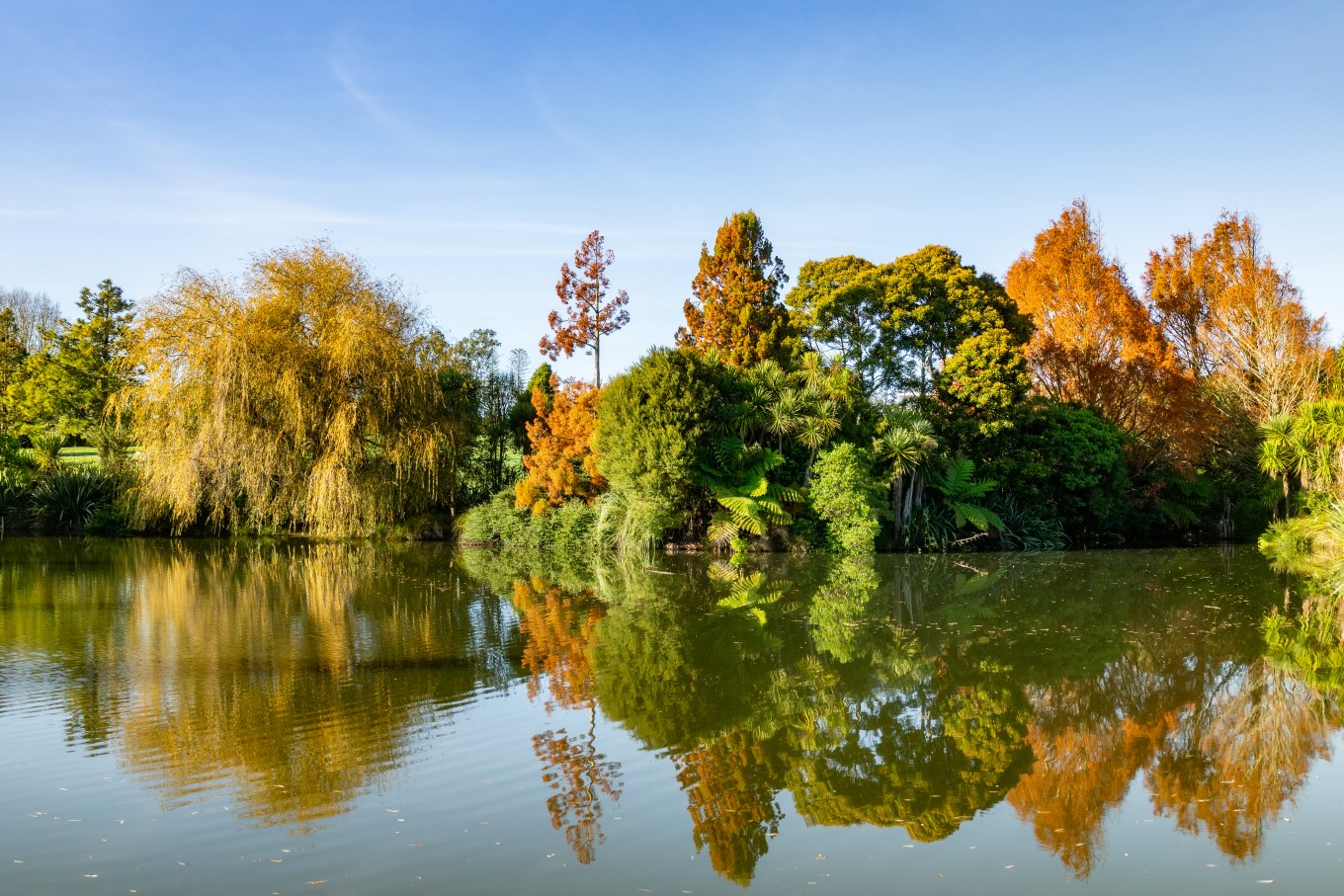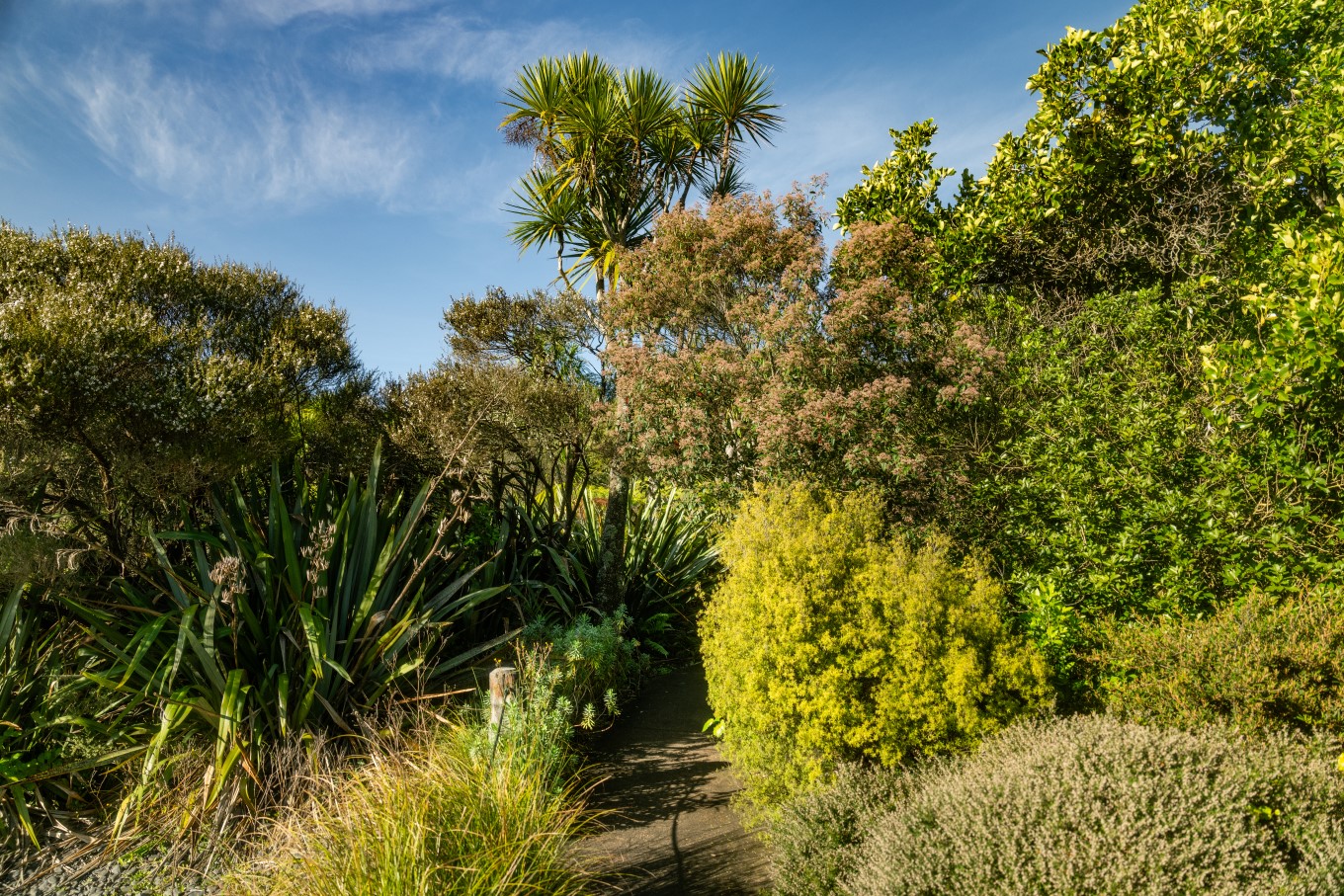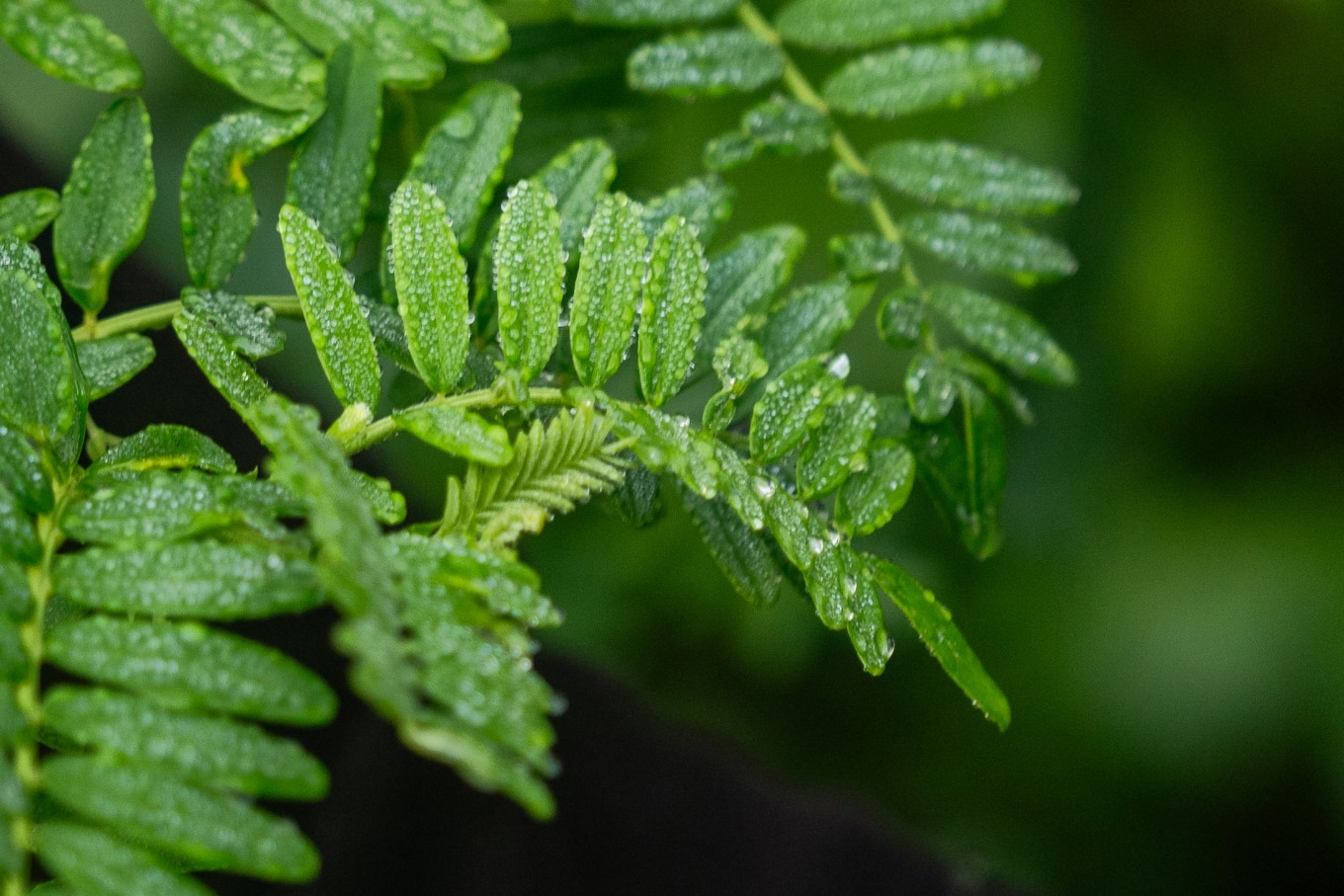Spring may get all the glory in the gardening world, but Auckland Botanical Gardens in winter proves that beauty can be achieved in your backyard at any time of the year. The Tāmaki Makaurau jewel is bursting with colour and bird song even in the coldest months, keeping the gardening team as busy as ever at this time of year.
Landscape architect and horticulturist Jeffrey Jones is one of the collections curators at the Oakland Botanical Gardens. His Monday mornings start with clearing his area (the perennial gardens and around the visitor center) with a leaf blower while he assesses the work for the week. In winter, he prune, dig up or divide plants to encourage new life, and mulch to keep weeds out and nourish the soil.
Jeffrey shares his pro tips for keeping your garden looking its best in winter, spring and summer, as well as advice for attracting native birds to your backyard.
Think at least one season ahead
To keep your garden looking its best all year round, you need to start early: if you're dreaming of daffodils and bulbs bursting from the ground in the spring, planting in late April or early May is the best time to do so.
“We're always thinking ahead to create colorful displays here at the Botanical Gardens,” says Jeffrey. “If you really want to experience the excitement of spring with flowers like freesias, daffodils and gladioli, you need to plant from late fall through mid-May.”
But spring isn't the only beautiful season for flowers in Auckland – plenty of winter flowers bloom too, including cyclamens, snowflakes and Narcissus 'Erlihia' – but they still require planning.
“We order our seeds and seedlings in January and start planning our colorful winter displays,” says Jeffrey. “We know that winter plants grow best if they're in the ground for a little while and have a little growth before the first frost, so we planted our winter displays – thousands of Iceland poppies, alyssum and primulas – in April.”
Some spring flowers, like tulips and peonies, aren't suited to Auckland's warm climate, so to avoid disappointment in your own garden, consult the experts to choose the best ones.
The Auckland Botanical Gardens has a range of free brochures to help you choose plants that will thrive all year round in Auckland's climate.
Auckland Botanical Gardens Collections Curator Jeffrey Jones says there are lots of ways to achieve a colourful garden all year round.
Planting trees in the winter
Jeffrey says winter is the best time to plant trees. During the cold months, trees can focus on developing strong root systems rather than producing leaves, flowers or fruit. Plant fruit trees in a well-drained location and mix compost into the soil to ensure the tree has plenty of nutrients.

In the soft winter light, the lake at Auckland Botanical Gardens is a tranquil place to relax and reflect.
Stake the tree when planting to avoid damaging the roots when the plant is established.
Fruitful gardening in Auckland
“What sets Auckland Botanical Gardens apart from other beautiful parks in the region is that we're here to study and test the plants that grow best in Auckland,” says Jeffrey. “We've produced a pamphlet with tips on which plants are best suited for Auckland's subtropical climate, which is the result of years of research. We plant a range of plants in our test gardens so that our experts can choose the eight best suited for our region.”
Fruit trees that do well in Oakland include feijoa (we plant two trees for cross-pollination and good yields), tamarillo, and citrus fruits such as mandarins, limes and Meyer lemons.
European plums such as Prunus domestica 'Luisa' and Japanese plums such as Prunus domestica 'Hawera' are well suited to Auckland's humid climate.
If you're looking for a beautiful fruit-bearing tree that will add shape and structure to your backyard, try the “Fuyu” persimmon, which has gorgeous foliage that turns red and orange in the fall.
Mix in native plants
In winter, you can also plant beautiful native shrubs and trees that will add colour, shape and pattern to your garden. They also provide food for native birds – a walk along the Native Species Identification Trail in Auckland Botanical Gardens will inspire you. Purple and pink hebes are a haven for insects and are a favourite food source for piwakawaka (coottail) and tauhou (silver cricket).

Explore the beautiful colours of native plants on the Native Plant Identification Trail at Auckland Botanical Gardens.
Flowering plants such as kowhai bloom from July to November and are favourites with nectar-loving tui and kereru (New Zealand pigeons). Kowhai can reach a height of 10 metres, so if you've got limited space, consider a dwarf variety such as Sophora microphylla 'Dragon's Gold'.
If shape and interest are key, don't miss Manuka (Tea Tree): perfect for hedgerows and coastal areas, and a favourite with both nectar-loving and insect-eating birds.
“You can't miss Manuka,” says Jeffrey, “It's small and flowers at different times of the year, so with native birds you have to take seasonality into account, which means you need to have food plants planted for all times of the year.”
Other native plants worth trying include mako mako (wineberry), hohere (lacebark), harakeke (flax) and dwarf varieties of puriri.
Plant rare and beautiful plants
If you really want to contribute to conservation, plant rare or endangered native species – Jeffrey recommends the pale-flowering Kumarahou pomadelis hamiltonii.
“Pomaderis hamiltonii is a close relative of the common kumarawa but is endangered and only found in the upper North Island,” Jeffrey says. “It has beautiful cream-coloured flowers and is an Auckland treasure that we want to protect.”
Another local treasure to plant is Clianthus puniceus, a variety of the Auckland kaka beak. Named for its beak-shaped flowers, this endangered shrub blooms from August to November, displaying a burst of colour that nectar-feeding birds love.
“The common kaka-billed Clianthus maximus gets all the attention, but Auckland's Clianthus puniceus is a beautiful sight and needs our help.”

Clianthus puniceus is a species of kaka beak native to Auckland that is critically endangered. This plant has beautiful foliage and striking flowers that are a favourite with tui.
Visit the gardens for inspiration
Not sure where to start with your own garden? A stroll through the grounds of Auckland Botanical Gardens will give you plenty of inspiration. The gardens are beautiful in any season, with the Camellia Garden bursting with pink and white flowers in winter and the Magnolia Garden in spectacular bloom.
Other areas that offer fantastic views in winter include the Rock Garden (some areas can be hired out for weddings) and the Aloe Section, which includes some stunning aloe trees that flower in the cooler months.


